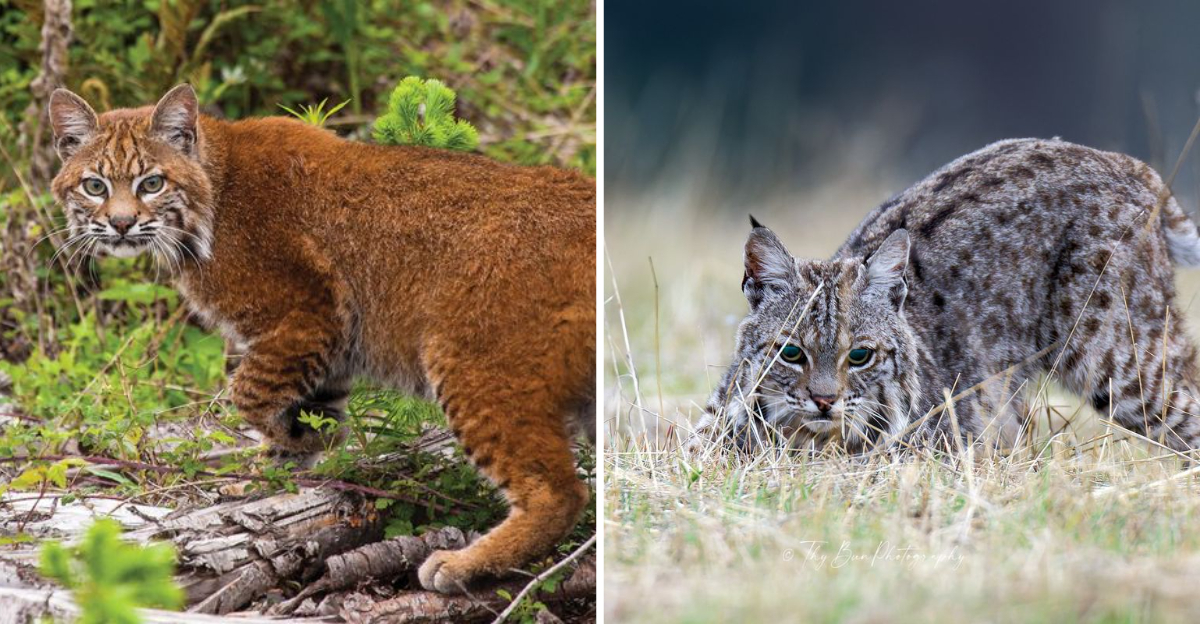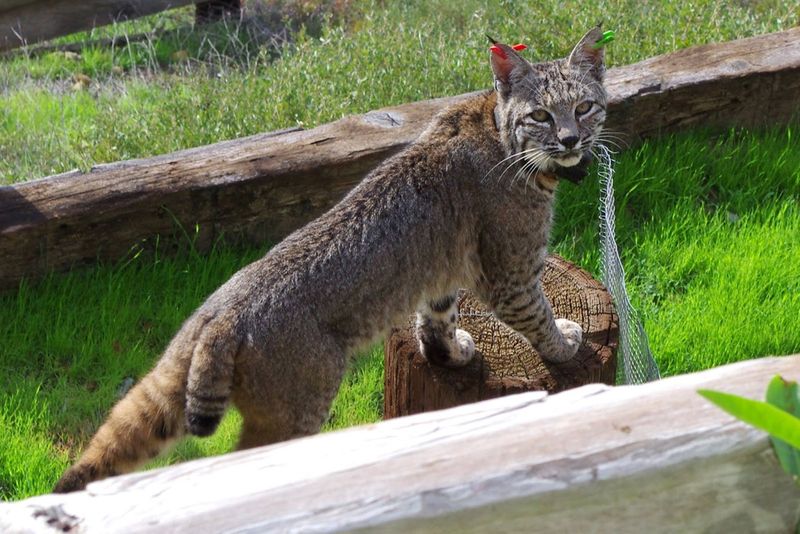📖 Table of Content:
- 1. Bobcats as Pest Controllers
- 2. Support Biodiversity
- 3. Bobcats Aid in Disease Control
- 4. Promote Plant Growth
- 5. Enhance Soil Quality
- 6. Bobcats Support Local Economies
- 7. Natural Predators
- 8. Bobcats and Climate Adaptation
- 9. Bobcats Require Specialized Care
- 10. Bobcats Pose Safety Risks
- 11. Bobcats Have Complex Social Needs
- 12. Bobcats Are Not Domesticated
- 13. Bobcats Require Legal Compliance
- 14. Bobcats Need Conservation Efforts
Bobcats, known for their stealth and adaptability, play a crucial role in maintaining ecological balance in the wild. While they are beneficial in their natural habitats, bobcats pose challenges when kept as domestic pets. This blog post explores the dual nature of bobcats, highlighting their ecological benefits and the reasons they should remain in the wild.
1. Bobcats as Pest Controllers
In the wild, bobcats control rodent populations, protecting crops and natural ecosystems. Their hunting prowess keeps pests like mice and rats in check, reducing the need for chemical pest control. This natural balance aids farmers and benefits local flora, allowing them to thrive without the burden of rodent infestations. Their presence in the wild ensures a harmonious ecosystem, where each species plays its part. The bobcat’s role as a predator is indispensable, maintaining the delicate balance of nature. Without them, ecosystems could face overpopulation of certain species, leading to ecological imbalance.
2. Support Biodiversity
The presence of bobcats in the wild contributes significantly to biodiversity. By preying on certain species, they help control populations, allowing other species to flourish. This balancing act ensures a variety of flora and fauna coexist, promoting a rich and diverse ecosystem. The bobcat’s selective hunting encourages the growth of certain plant species, providing food and shelter for various animals. This intricate web of life is a testament to their ecological importance. Without bobcats, some species might dominate, stifling diversity and disrupting natural habitats.
3. Bobcats Aid in Disease Control
By controlling rodent and small mammal populations, bobcats indirectly reduce the spread of diseases. Rodents are often carriers of ticks and parasites, which can transmit illnesses to humans and other animals. With bobcats keeping these populations in check, the risk of disease transmission decreases. Their presence in the ecosystem acts as a natural barrier against potential outbreaks. This natural disease control is vital for maintaining the health of both wildlife and human communities living nearby. The reduction in rodent populations curtails the spread of zoonotic diseases, contributing to healthier environments.
4. Promote Plant Growth
Bobcats indirectly support plant growth by preying on herbivores that would otherwise overgraze. By keeping populations of rabbits and deer in check, they prevent overconsumption of vegetation, allowing plants to regenerate. This control maintains the health and diversity of plant life, contributing to a vibrant ecosystem. Their predatory presence ensures that herbivores do not decimate entire plant populations, preserving the integrity of forests and grasslands. The balance they provide supports a richer biodiversity, where plants have the opportunity to flourish and sustain other wildlife.
5. Enhance Soil Quality
Through their natural behaviors, bobcats contribute to soil health. By controlling populations of burrowing animals, they reduce soil erosion and compaction. This activity promotes healthier soil structure and enhances nutrient cycling, vital for plant growth. Their role in the ecosystem ensures that the soil remains fertile and productive, supporting a wide range of plant and animal life. The presence of bobcats helps maintain the balance of nature, where every species contributes to the health of the environment. Their indirect influence on soil quality is a testament to their ecological significance.
6. Bobcats Support Local Economies
Bobcats, being a part of the wild allure, draw tourists and nature enthusiasts, boosting eco-tourism in regions where they thrive. This economic benefit supports local communities, providing jobs and promoting cultural heritage sites. The presence of bobcats can lead to increased funding for conservation efforts, ensuring their habitats are preserved. By attracting visitors, they play a role in sustaining local businesses and encouraging environmental stewardship. This economic boost highlights the interconnectedness of wildlife and human prosperity, where preserving natural habitats directly benefits local economies.
7. Natural Predators
In their natural habitats, bobcats are top predators, maintaining the balance of ecosystems by managing prey populations. Their hunting activities prevent overpopulation of certain species, which could otherwise lead to resource depletion. This predatory behavior ensures a stable and healthy environment, where various species can coexist. Their role as natural predators is crucial for sustaining biodiversity and promoting resilient ecosystems. Bobcats, through their predation, support a balanced food web, where each species has its role, contributing to the health and sustainability of the natural world.
8. Bobcats and Climate Adaptation
Bobcats demonstrate remarkable adaptability to various climates, making them resilient contributors to ecosystem stability. Their ability to thrive in diverse environments ensures they can continue their ecological roles despite climate changes. This adaptability not only aids in their survival but also supports the ecosystems they inhabit. By maintaining their presence, bobcats help ensure that ecosystems remain balanced and resilient in the face of environmental shifts. Their flexibility in adapting to different climates underscores their importance as a species that can withstand and mitigate the impacts of global climate change.
9. Bobcats Require Specialized Care
Keeping bobcats as pets is challenging due to their specialized care requirements. These wild animals need vast spaces, specific diets, and enrichment that mimic their natural habitats. Without these, they can develop health and behavioral issues. Their wild nature makes domestic life stressful for them, leading to potential harm to both the bobcat and its owner. Unlike domestic cats, bobcats require expert knowledge and facilities to thrive, which most households cannot provide. Their natural instincts and needs highlight why they belong in the wild, where they can live fulfilling lives.
10. Bobcats Pose Safety Risks
Bobcats, with their sharp claws and powerful jaws, pose significant safety risks when kept as pets. Their natural behaviors, such as hunting and territorial marking, can lead to dangerous situations in a home environment. Unlike domestic pets, bobcats retain their wild instincts, which can manifest unpredictably. These risks make them unsuitable for households, particularly those with children or other animals. The potential for injury or escape highlights the impracticality of keeping bobcats in domestic settings. Ensuring safety for both humans and bobcats means respecting their wild nature and habitat needs.
11. Bobcats Have Complex Social Needs
Bobcats are solitary creatures with complex social structures that do not translate well to domestic settings. In the wild, they establish territories and communicate through scent marking and vocalizations. These behaviors are difficult to replicate in a home environment, leading to stress and behavioral issues. Understanding their social needs is crucial for their well-being, which is compromised in captivity. Their independence and territorial nature require vast areas to roam, something that domestic life cannot offer. Keeping bobcats as pets fails to meet their social and emotional requirements, underscoring their need for freedom.
12. Bobcats Are Not Domesticated
Unlike cats that have been bred for companionship, bobcats remain undomesticated, retaining wild traits that make them unsuitable as pets. Their instinctual behaviors are not aligned with domestic life. Attempts to domesticate bobcats often result in frustration for both the animal and the owner. These wild animals thrive in environments where they can exercise natural behaviors, such as hunting and roaming. Domestic settings cannot meet these needs, leading to stress and potential aggression. Understanding the fundamental differences between bobcats and domestic pets is key to appreciating their wild beauty and respecting their independence.
13. Bobcats Require Legal Compliance
Owning a bobcat as a pet involves navigating complex legal regulations that vary by region. Many jurisdictions require permits or outright ban the ownership of wild animals due to safety and ethical concerns. These legal requirements highlight the challenges of keeping bobcats in domestic settings. Compliance ensures the safety and well-being of both the bobcat and the community. Understanding these laws is crucial for anyone considering exotic pet ownership. These regulations are designed to protect ecosystems and prevent the potential negative impacts of keeping wild animals in captivity. Legal barriers reinforce bobcats’ place in the wild.
14. Bobcats Need Conservation Efforts
Bobcats face threats from habitat loss and human encroachment, making conservation efforts crucial for their survival. Protecting their natural habitats ensures they can continue to fulfill their ecological roles. Conservation programs focus on preserving these environments and mitigating the impacts of urbanization. Supporting these efforts is vital for maintaining biodiversity and ecological balance. Understanding the importance of conservation can drive policies and initiatives that protect bobcats and their habitats. By valuing their role in the ecosystem, we can contribute to sustainable practices that ensure their continued existence in the wild.














